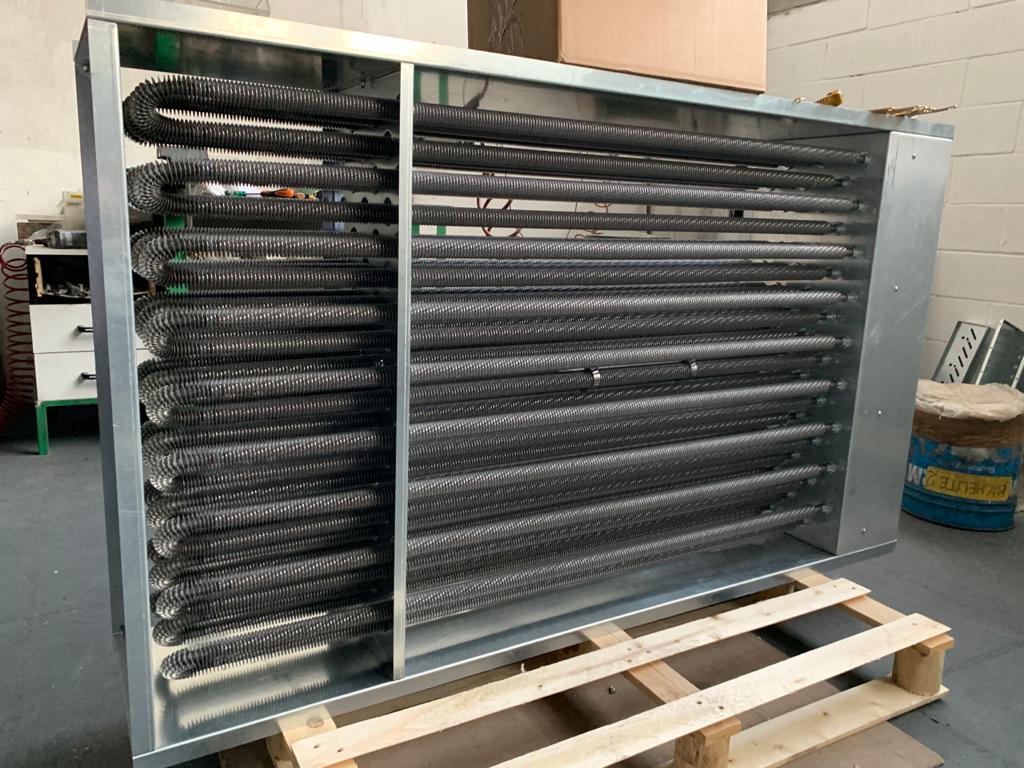Heat exchangers are essential components in a variety of industrial applications where heat transfer between fluids or temperature control is required. With the advancement of technology, heat exchangers come in a variety of designs, sizes, and materials to cater to specific requirements. One of the most popular types of heat exchangers is the finned heat exchanger, which is used in industries such as aerospace, chemical plants, oil coolers, motor cars, and railway engines. Do you want to know everything about the finned heat exchanger? If yes, keep on reading! In this article, we will explore the design, applications and advantages of finned heat exchangers and how they can meet your thermal performance needs.
Table of Contents
What is a finned heat exchanger?
A finned heat exchanger is a type of heat exchanger that uses a primary heat transfer surface, such as a tube or plate, with additional fins attached to the surface to increase the heat transfer surface area. The fins create flow channels that increase the heat transfer between fluids by enhancing the axial heat conduction and enlarging the heat transfer area. The fins can be attached to the outer surface or the internal surface of the primary surface, depending on the heat transfer requirements. Based on the requirements, heat exchangers are available in a variety of designs and functions.
The design and function of finned heat exchangers
Finned heat exchangers come in different designs, but the most common type is the plate-fin heat exchanger. In this design, flat plate fins are sandwiched between adjacent plates to form finned chambers. The fluid flows in the flow channels created by the fins, while the heat is transferred between the fluids and the primary surface. The flow channels are formed by stacking the adjacent plates with different sizes and shapes of fins. The fins can be made of aluminum alloy, carbon steel, stainless steel, or a combination of these materials. Are you not sure which material will be the best option for your installation? Get in touch with ICARUS, so we can help you ensure the best solution to fulfill your needs.
Another type of finned heat exchanger is the tube fin heat exchanger, which uses tube coils with fins attached to the outer surface. The fluid flows inside the tubes, while the fins increase the heat transfer surface area and enhance the heat transfer between the fluids. The tube fins can be made of aluminum alloy, carbon steel, stainless steel, or a combination of these materials.
Finned heat exchangers can also be classified into two types based on their cooling method: air-cooled heat exchangers and liquid-cooled heat exchangers. Air-cooled heat exchangers use air flow to dissipate the heat, while liquid-cooled heat exchangers use a liquid coolant to transfer the heat to a secondary surface. Finned heat exchangers are also available in different designs, from compact sizes for motor cars and aircraft to large sizes for chemical plants and railway engines.
CUSTOMIZED SOLUTIONS
DIRECT MANUFACTURER BENEFITS
LOWER OWNERSHIP COSTS (TCO)
SUPERIOR DURABILITY
The design for robust heat exchangers
The design of heat exchangers plays an important role in ensuring their robustness and performance. Several factors must be considered during the design process, such as the material selection, the flow rate of the fluids, and the operating conditions. A well-designed heat exchanger should have a low pressure drop, a high heat transfer coefficient, and a surface for heat transfer that is resistant to fouling.
Plate fin coils are a popular choice for heat exchanger design. They are composed of a flat plate with fins attached to the surface. The fins create flow channels that increase the heat transfer surface area, and the fluid flows through the channels to transfer heat to the primary surface. Plate fin coils can be made from different materials, including stainless steel plate fins and carbon steel plate fins.
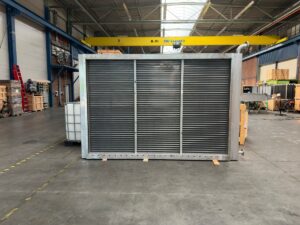
The applications of finned heat exchangers
Finned heat exchangers have a wide array of applications in different industries, from aerospace to chemical plants. They are commonly used in applications that require a robust and cost-effective heat transfer solution with a compact design. Finned heat exchangers are popular in many industries because of their lightweight properties and tough duties. They are used as oil coolers, air conditioning systems, and heat exchangers for hydraulic systems.
In the chemical plant industry, finned heat exchangers are used in applications that require a modular design and a wide range of temperature applications. They are used for heat recovery, heat transfer, and temperature control in processes such as distillation, evaporation, and absorption. Finned heat exchangers are also used in the motor car and railway engine industries for cooling engines, transmissions, hydraulic systems, and many more. Keep on reading to find out the benefits of finned heat exchangers for your installation.
Contact our expert innovator
Elmer de Goode
Elevate your efficiency with Dutch-engineered solutions tailored for your needs. Contact our specilialized team for all your questions.
What are the advantages of finned heat exchangers?
Finned heat exchangers offer several advantages over conventional heat exchangers. The additional heat transfer surface area provided by the fins increases the heat transfer coefficient, resulting in an increase in the heat transfer rate. This makes finned heat exchangers more efficient and effective in transferring heat between fluids. The compact heat exchanger size makes them ideal for applications where space is limited, such as in motor cars and aircraft. Finned heat exchangers are also more cost-effective than conventional heat exchangers because they require less material for the same heat transfer capabilities.
The superior performance of finned tube air heat exchangers makes them an excellent choice for a wide range of applications, including air heat transfer applications, hydrogen coolers, waste heat recovery, driers and generator coolers. They are also commonly used in midstream compressor stations and air separation plants. The symmetrical arrangement of the fins and the tubes allows for a more uniform flow of the fluid, which results in a higher energy transfer rate and lower energy consumption.
Your ambitions, our mission
Our skilled team at Icarus Information is prepared to convert your event questions into practical solutions. Are you ready to take the next step?
Conclusion
Finned heat exchangers are a popular choice for industrial applications that require a robust and cost-effective heat transfer solution with a compact design. The additional heat transfer surface area provided by the fins makes them more efficient and effective in transferring heat between fluids, while their modular design allows for a wide range of temperature applications. Finned heat exchangers have a wide array of applications, from the aerospace industry to chemical plants, and offer several advantages over conventional heat exchangers, such as increased thermal performance and cost-effectiveness. However, the design and selection of materials can be challenging, and regular maintenance is required to ensure the longevity and safety of the heat exchanger. As such, it is crucial to consult with an experienced heat exchanger manufacturer, such as ICARUS, to determine the most suitable type of finned heat exchanger for your specific industrial application.
RELATED ARTICLES
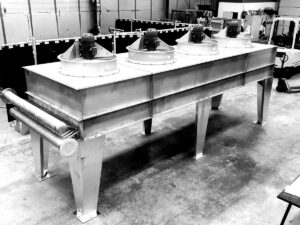
Dehumidification of air
In the realm of industrial efficiency and innovation, ICARUS Heat Exchangers stand as a beacon of excellence, particularly when it comes to the dehumidification of air. This process is crucial in various sectors, including construction, where controlling humidity levels can significantly impact project timelines, material integrity, and ultimately, the overall success of a project. Table
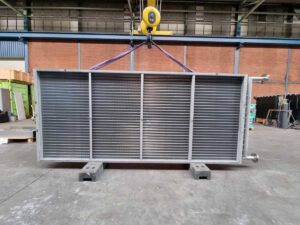
The innovating water to air heat exchanger
At ICARUS Industrial, we’ve been at the forefront of heat exchange innovation, continuously exploring and developing technologies to drive efficiency and sustainability in diverse industries. Today, we’re excited to delve into the world of our latest breakthrough: the innovative water-to-air exchanger. Engineered with meticulous precision and cutting-edge technology, this game-changing device optimizes the transfer of
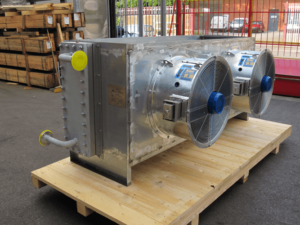
Is propylene glycol cooling the industrial game-changer?
Welcome to the fascinating world of propylene glycol cooling! ICARUS Industrial, a leading finned tube heat exchanger manufacturer, invites you to explore the advantages and applications of propylene glycol cooling in modern industrial processes. Table of Contents Understanding propylene glycol Propylene glycol is an organic compound widely used for its excellent heat transfer properties. This
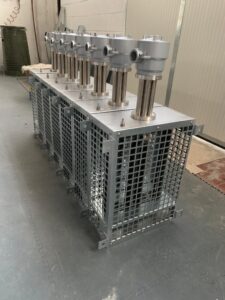
How heat exchange systems transform the energy usage
Welcome to the world of heat exchange systems, where energy efficiency and innovative technology transform the way industries use and manage energy. ICARUS Industrial is at the forefront of this revolution, with our robust finned heat exchangers. We provide bespoke, cost-effective solutions with direct manufacturer benefits, setting us apart in the industry. Table of Contents

